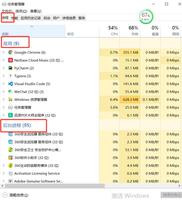Python 求向量的余弦值操作
1、余弦相似度
余弦相似度衡量的是2个向量间的夹角大小,通过夹角的余弦值表示结果,因此2个向量的余弦相似度为:
余弦相似度的取值为[-1,1],值越大表示越相似。
向量夹角的余弦公式很简单,不在此赘述,直接上代码:
def cosVector(x,y):
if(len(x)!=len(y)):
print('error input,x and y is not in the same space')
return;
result1=0.0;
result2=0.0;
result3=0.0;
for i in range(len(x)):
result1+=x[i]*y[i] #sum(X*Y)
result2+=x[i]**2 #sum(X*X)
result3+=y[i]**2 #sum(Y*Y)
#print(result1)
#print(result2)
#print(result3)
print("result is "+str(result1/((result2*result3)**0.5))) #结果显示
cosVector([2,1],[1,1])
一个计算二维数组余弦值的例子:
#求余弦函数
def cosVector(x,y):
if(len(x)!=len(y)):
print('error input,x and y is not in the same space')
return;
result1=0.0;
result2=0.0;
result3=0.0;
for i in range(len(x)):
result1+=x[i]*y[i] #sum(X*Y)
result2+=x[i]**2 #sum(X*X)
result3+=y[i]**2 #sum(Y*Y)
#print("result is "+str(result1/((result2*result3)**0.5))) #结果显示
return result1/((result2*result3)**0.5)
#print("result is ",cosVector([2,1],[1,1]))
#计算query_output(60,20)和db_output(60,20)的余弦值,用60*1的向量存储
cosResult= [[0]*1 for i in range(60)]
for i in range(60):
cosResult[i][0]=cosVector(query_output[i], db_output[i])
print(cosResult)
--------------------------------------------------------------------------------------------
#计算query_output和db_output的余弦值,用60*1的向量存储
rows=query_output.shape[0] #行数
cols=query_output.shape[1] #列数
cosResult= [[0]*1 for i in range(rows)]
for i in range(rows):
cosResult[i][0]=cosVector(query_output[i], db_output[i])
#print(cosResult)
#将结果存入文件中,并且一行一个数字
file=open('cosResult.txt','w')
for i in cosResult:
file.write(str(i).replace('[','').replace(']','')+'\n') #\r\n为换行符
file.close()
补充:python实现余弦近似度
方法一:
def cos(vector1,vector2):
dot_product = 0.0
normA = 0.0
normB = 0.0
for a,b in zip(vector1,vector2):
dot_product += a*b
normA += a**2
normB += b**2
if normA == 0.0 or normB==0.0:
return None
else:
return 0.5 + 0.5 * dot_product / ((normA*normB)**0.5) #归一化 <span style="font-family: Arial, Helvetica, sans-serif;">从[-1,1]到[0,1]</span>
方法二:
num = float(A.T * B) #若为行向量则 A * B.T
denom = linalg.norm(A) * linalg.norm(B)
cos = num / denom #余弦值
sim = 0.5 + 0.5 * cos #归一化 从[-1,1]到[0,1]
以上为个人经验,希望能给大家一个参考,也希望大家多多支持。如有错误或未考虑完全的地方,望不吝赐教。
以上是 Python 求向量的余弦值操作 的全部内容, 来源链接: utcz.com/z/345904.html




